Winter Care for Fair Weather Sailors
Go To: Sailing - Dinghy Repair
Posted on 15 December 2008 18:02
This is for all those fair weather sailors who aren't keen on sailing over winter and the colder months. Take some time to put your boat to bed for the winter.
For all of you who don't have access to take your boat home over the colder weather a few checks may be advisable to make sure your boat stays safe and sound! Fortunately our boat park has a fair share of most of the problems, so we have plenty of pictures to show!
1. Check all pins and shackles, make sure that they're secure and in working condition.
2. For those with stayed masts, tape up any pins attached to the shrouds and forestay (Photo 1), or change them for bottle screws. This stops them working themselves loose (unlikely) or wandering fingers casually undoing them - although not a problem if you have a secure dinghy park. Unfortunately ours is secured by a 4 ft high wooden fence in a public park.

Photo 1, Take up pins and shackles

Photo 2, Don't leave bungs in
3. Take all bungs out to make sure all the water out of the boat so it doesn't cause any damage. If water is left trapped in internal buoyancy tanks and freezes, it expands and can damage the boat from the inside. It's best to take them with you (Photo 2) - if you tie them to the boat, chances are they may go missing over the winter.
4. Take all foils (daggerboard and rudder), sails (for those who have a secure boat yard) and accessories out, such as bilge pumps, bailers and spare ropes out, so they aren't taken or ruined over the colder months.
5. If you do leave any removable items in the boat, it's a good idea to put a name and sail number on for insurance reasons. If you want to be extra safe, put a postcode or sailing club on too.
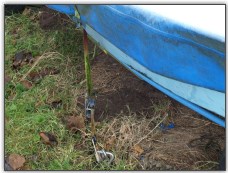
Photo 3, Tie down your boat with ratchets
6. If you have a larger boat make sure it is secured to the ground by two stakes and a ratchet strap so there's no risk of it being knocked over by the wind on to another boat. Screw stakes can be found in most DIY shops, and are screwed into the ground, as in Photo 3.

Photo 4, Don't let water pool and freeze in covers
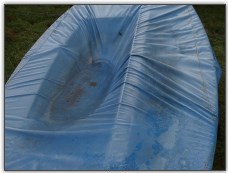
Photo 5, Position objects carefully underneath to support the cover
7. Make sure the cover is securely on so as much water stays out as possible. If water pools in the top of covers and freezes (Photo 4), it can damage the fibres of the cover and eventually ruin it. Make sure your cover is in good condition and make any repairs necessary (duct tape or gaffer tape makes a good temporary repair, as in Photo 9). To keep water out, tie the cover on securely, tighten all straps, and if necessary, put objects inside it to hold the cover up (Photos 5, 6, 7 and 8). For example, on Lasers the boom and masts work well, otherwise an upturned bucket does the job, or pieces of 2x4 wood across the length of the cockpit.
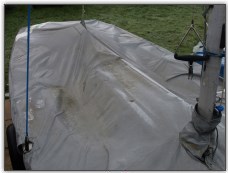
Photo 6, A better protected cover
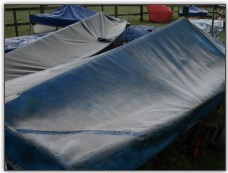
Photo 7, No water pooling in this one
8. Make sure the cover is clean - over the year, dirt and algae will build up on a cover, particularly on the straps, and will make it unsightly and weaken the fibres. Cleaning is easy - use a bucket of soapy water and a small hand or dust pan brush, see our Cleaning Article for more information .
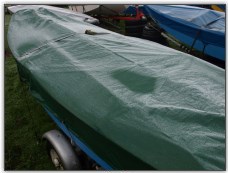
Photo 8, A well supported cover
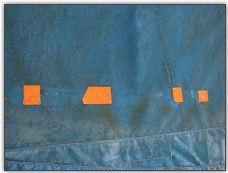
Photo 9, This cover has been repaired - not perfect, but does the job
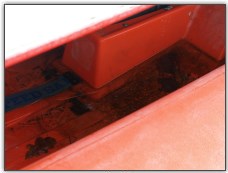
Photo 10, Try to keep uncovered boats empty of leaves and water
9. Pump the tyres up on the trailer and trolley, and if like our boat yard dig the tyres out of the ground (Photos 11, 12 and 13). Trailers in particular should be moved around even if only by a few inches regularly to avoid the wheels sinking into the ground where the rubber may start to deteriorate and rot.
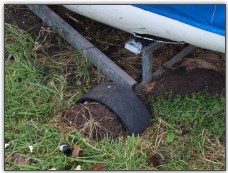
Photo 11, Only a trolley wheel - but difficult to get out
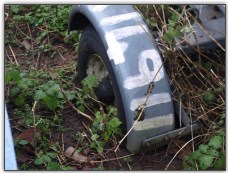
Photo 12, This trailer wheel will have rotted and need replacing
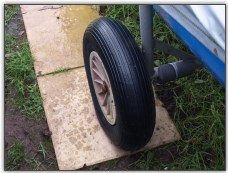
Photo 13, If you can, put down slabs or a hard surface
10. Make sure your boat is locked up and secured! If your boat yard is secure, this may not be necessary, otherwise a length of chain and a good padlock is usually sufficient. For boats with daggerboards, it's good to chain through the daggerboard slot (Photo 15); remember its easy to undo the rope on a forestay to remove the chain from around it (Photo 14).

Photo 14, Chaining around the forestay is not secure!

Photo 15, This boat is secured well - but with no cover so is ruined
11. Give the boat a good wash before you pack it away - rinse rope and blocks in fresh water (particularly important if you sail on salt water) to rinse out salt particles - you should do this all the time anyway, but it's doubly important over the winter. Clean any dirt out, and remove any loose ropes or sheets that are easy to remove. It's also best if you can remove the sails, and put them somewhere cool and dry such as a garage over the winter, rather than in a boat that will get wet.
12. Don't forget, if you're not sailing over the winter, it's the perfect time to get the boat into a nice warm garage and start making those repairs you've been putting off all summer, so it's ready to go next year.
Summary
You can't just pack your boat away like you always do at the end of the season, and expect it to come through 4 or 5 months of harsh weather without any problems. Spend an hour or so bedding it down properly, and next year it should be ready to go, and you won't be facing long weekends of repairing winter damage.